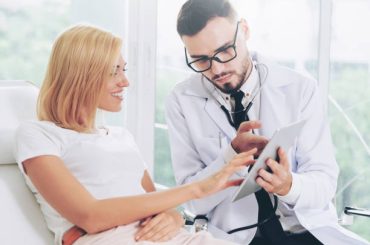Earlier this week, we discussed the myths and stigmas associated with medically-assisted treatment (MAT). Some see MAT as no more than substituting one addiction for another. But the process is more nuanced than that – MATs are a combination of medicine and therapy, to help your body and mind learn to live without the opioids it has come to depend on. Here’s a little more information on the science behind these treatments.
How Does MAT Work?
Opioid doctors generally administer MATs to people who have been diagnosed with an opioid use disorder. They help normalize their brain chemistry, block their euphoric “high” feeling and stop the physiological cravings they experience during withdrawal. MAT is primarily used to treat addictions to heroin and prescription painkillers.
MAT drugs, sometimes called substitution opioids, work a little differently than regular opioids. They’re designed to change your brain and nervous system’s responses to pain – they act more slowly than many prescription painkillers. They also block the high you get from opioids like heroin, morphine, hydrocodone and codeine.
MAT Drug Examples
The drugs used for MAT vary depending on your addiction, ability to detox (i.e whether or not you can go without opioids between treatments) and access to care. Methadone is a popularly prescribed MAT drug, but it must be administered in a clinic. Buprenorphine (also called Suboxone) is a take-home drug that is taken once or twice a day, but because of this it is also easier to misuse. Extended-release drugs like naltrexone are also increasing in popularity – this drug only needs to be administered once a month, but requires full detoxification to use (three to 10 days of no opioid use).
All of this is to say, like many treatments, MAT is a process. It’ll take long-term effort, but also diligent planning. Make sure to be honest with your provider about your addiction and usage concerns. That way, they can find your best treatment option.
If you have been diagnosed with opioid use disorder, you may also qualify for an opioid treatment program (OTP). Federal law requires patients who complete an OTP to also receive counseling, educational and vocational services, along with prescribed medication. Remember: all these techniques mean to heal both your body and mind.
Who Does MAT Benefit?
MAT isn’t for everyone, but for those who participate in MAT programs, the results have proven effective. A 2015 study in England found that MAT cut the all-cause mortality rate among addiction patients in half.
What MAT does, at the end of the day, is get people to a place where they can be productive members of society again, Dr. Stuart Gitlow, former president of the American Society of Addiction Medicine, told Stat News.
“The drug we’re replacing is a dangerous one that will kill you, and we’re replacing it with a drug that allows you to go back to work and have money in your pocket and allow you to live normally again,” Gitlow said.
Who Offers MAT?
Several medical associations and foundations have begun offering MAT as part of their addiction counseling services. The Hazelden Betty Ford Foundation began offering the service in 2012, and treatment programs are available in most states in the U.S. (the Dept. of Health and Human Services compiled a database of treatment centers). You can search here for a methadone clinic near you, and make sure to visit In The Rooms’s treatment directory also.
Also make sure to visit In The Rooms’s treatment directory, and to learn more about opioids and opioid addiction treatment if you want to. And if you haven’t, join In The Rooms for free today! That was, you can access all the recovery meetings and community we have to give you.
Photo by Matt Hardy from Pexels







1 Comment
Thank you so much for this post!!
I am in fact a recovering addict, and in MAT.
In The Rooms, and my ITR Sponsor have been so supportive, and will
always be a blessing for me.